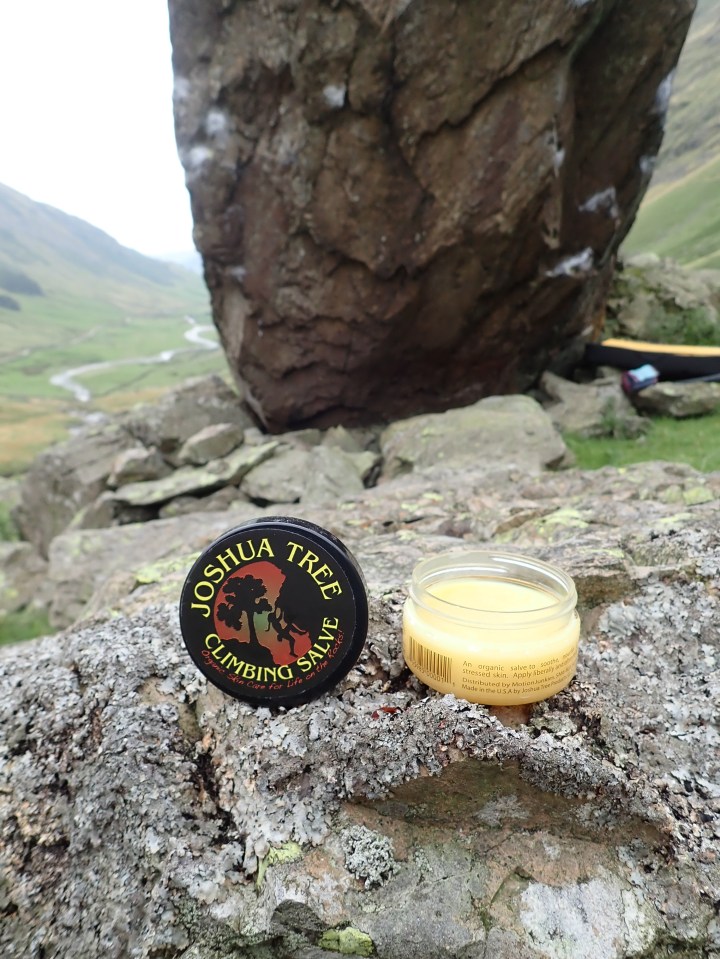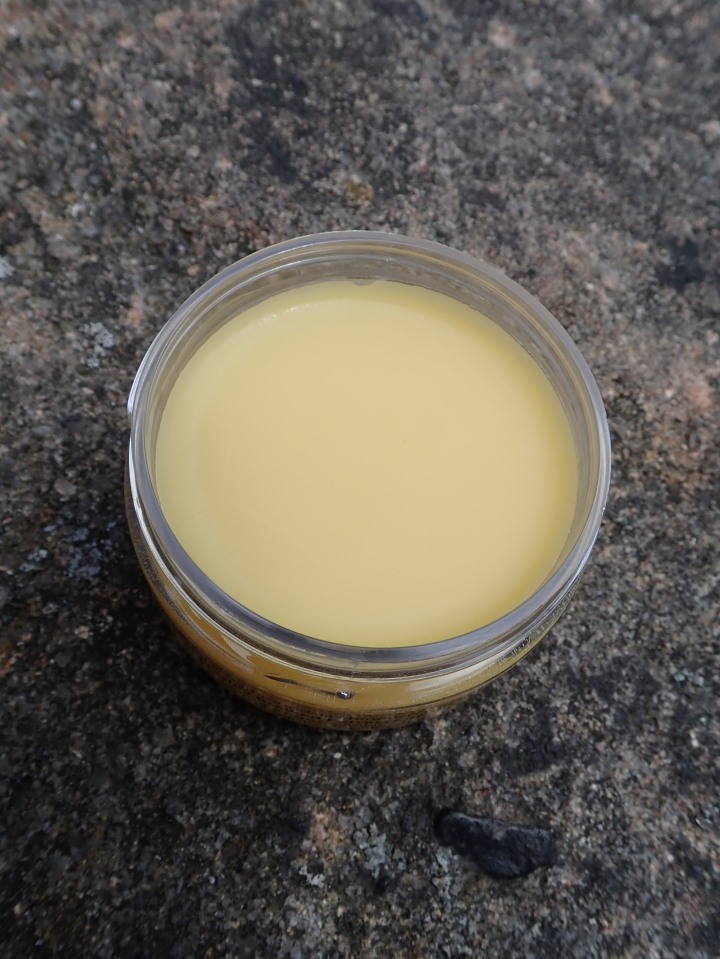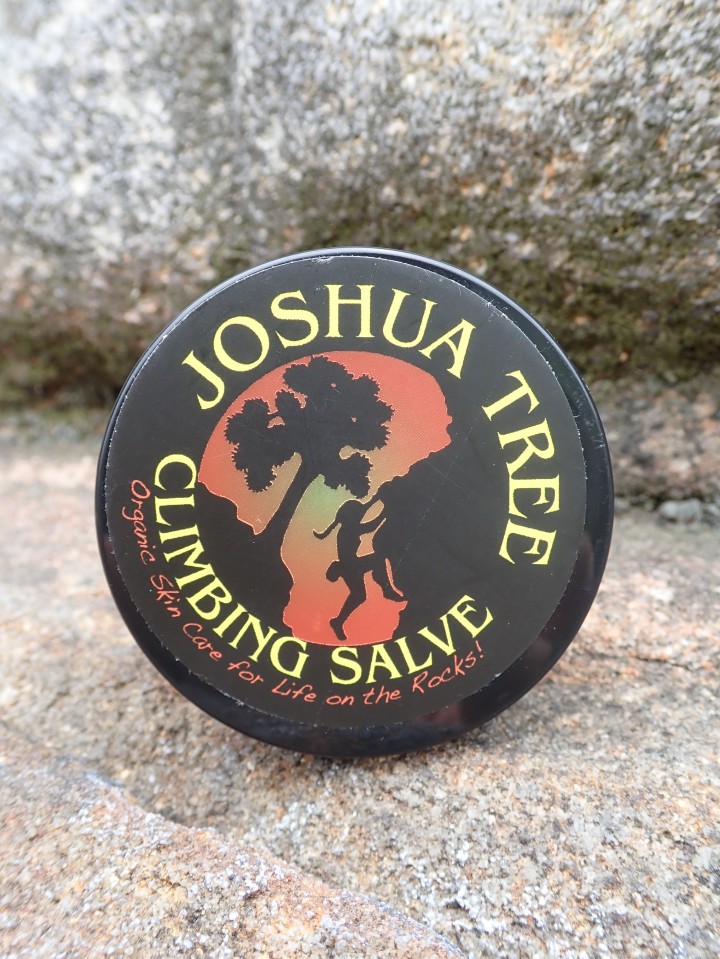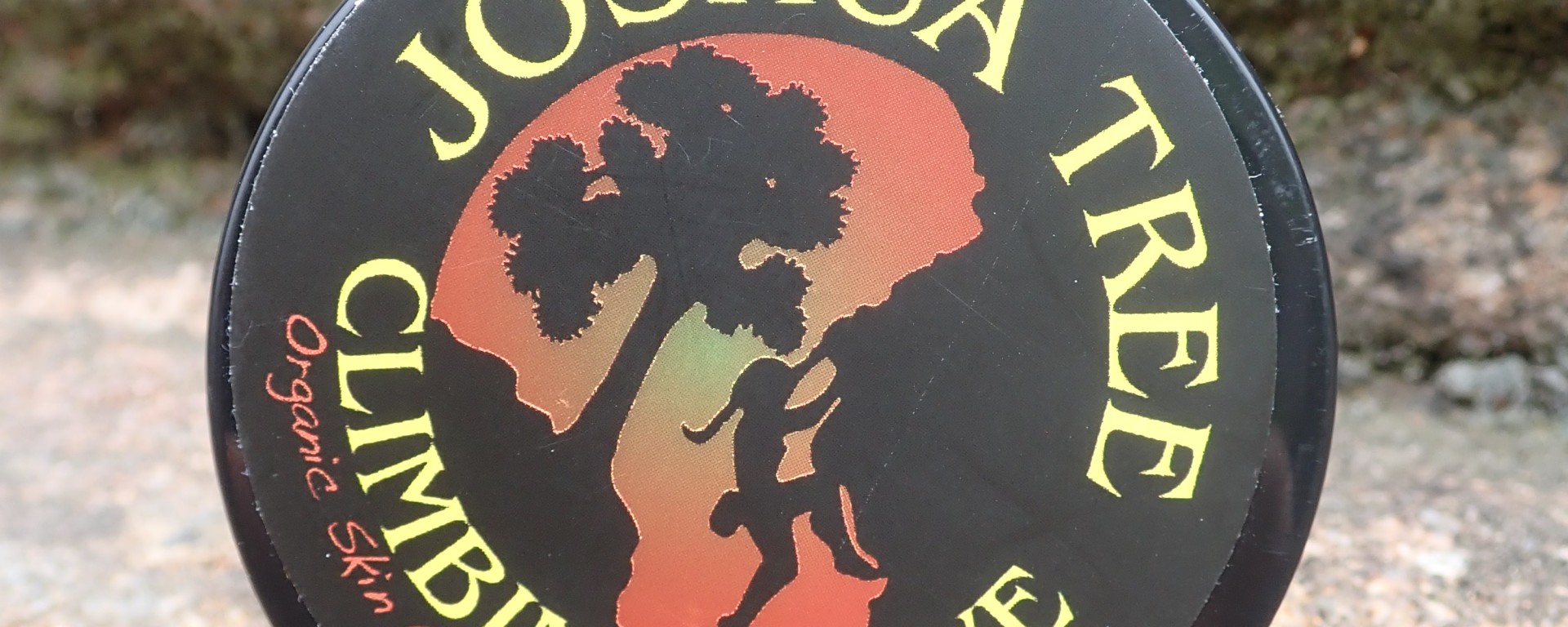
Quite a few people responded to my earlier reviews of hand balms for climbers by raving about Joshua Tree Climbing Salve, and suggesting I give it a go. Unfortunately, it wasn’t sold in the UK. Relatively recently a few places have started stocking it. Over the last year I’ve been using Joshua Tree Climbing Salve to look after my hands after climbing indoors and outdoors, as well as after lots of handwashing. While it’s a good balm that I keep coming back to, I’ve found that Joshua Tree Climbing Salve doesn’t quite live up to all the great things I’ve heard about it.
What is it?
Joshua Tree states on its website that:
“JTree salve is an organic, unscented, skin-healer that is effective in treating flappers, gobis, blown tips, scrapes, cuts, and abrasions. Created using a blend of essential oils, freshly extracted from the finest organic herbs, JTree Salve moisturizes and promotes healing without softening calluses that the body produces for protection.”
Essentially, Joshua Tree Climbing Salve is golden/amber-coloured, shiny cream. It comes in a plastic tub, which means it’s easy to get the cream out of by scrapping some up with your thumb nail, or by picking up some up on the end of your finger.
Joshua Tree Climbing Salve is surprisingly soft for something in which the primary ingredient is beeswax. Almost all of the other beeswax-based based climbers balms I’ve tried have been more solid, waxy pucks. I’m guessing that Joshua Tree Climbing Salve is made softer by increasing the proportion of oil in it. All of the other ingredients in Joshua Tree Climbing Salve are oils, with sunflower seed oil and Jojoba seed oil being the ones that immediately follow beeswax in the ingredients list. After this are lavender and tea tree oils, and then calendula officinalis (marigold), symphytum officinale (comfrey), echinacea, larrea tridentate, myrrh, and benzoin styrax.
Beeswax is used so much in climbing balms as it’s a natural humectant, acting to draw moisture from the air into the skin and locking it there. Beeswax is also said to be anti-inflammatory, anti-bacterial and anti-allergenic, as well as being a germicidal antioxidant and source of Vitamin A.
Joshua Tree provides the following explanation on its website of the benefits of the other ingredients.
“Calendula: A wound healing herb that reduces inflammation of infected and irritated skin. Comfrey: An herb that reduces pain and promotes healing by forming a protective surface over wounds. Echinacea: An herb containing anti-bacterial and anti-inflammatory properties that aids in fighting infections and promotes healing. Wildcrafted Chaparral: An herbal antibiotic containing antioxidants and antiseptic properties that decreases inflammation and wards off infection. Myrrh Gum: A resin extracted from tree sap that contains strong disinfectant properties used to heal wounds. Benzoin Gum: A resin extracted from the bark of trees that contains antiseptic properties to heal wounds and antioxidants that prevent infection. Tea Tree Oil: Fights infections acne and insect bites. Lavender OIl: Heals wounds, burns and prevents scarring. Jojoba Oil: A liquid wax extracted from the seeds of jojoba trees that provides lasting moisture for skin.”

What’s it like?
Joshua Tree Climbing Salve is easy to spread evenly over your hands. Unfortunately, it is not quickly absorbed into the skin.
Most climbing balms leave a residue on your hands that leaves them feeling oily, waxy or greasy for a few minutes. Reducing how much balm you apply usually makes a difference to whether this happens, or how long it happens for. However, it can be a matter of balancing putting enough balm on to properly cover your hands, against putting on so much that you leave oily fingerprints on whatever you touch. With Joshua Tree Climbing Salve it’s hard to get this balance right. It leaves my hands oily for quite a few minutes after I’ve applied it. The only balm that I’ve found worse in this respect is Metolius Climber’s Hand Repair Balm.
Other than this, the Joshua Tree Climbing Salve otherwise works well. All importantly, it keeps my hands moisturised and feeling good for several hours (even with all the hand washing). It’s not the best balm I’ve ever tried, but it’s a solid performer that I’ve kept on using. I even bought more after my first tub ran out.
I keep coming back to Joshua Tree Climbing Salve because it’s quick to use, and versatile. For instance, I’ve also found that Joshua Tree Climbing Salve calms down and soothes the eczema that I sometimes get on my nose. The fact that it’s more of a cream than a puck of wax means that it’s easier to apply to the face. However, I have found that Joshua Tree’s absorbency on my face is considerably worse than its absorbency on my hands.
My wife has also discovered that Joshua Tree Climbing Salve calms down her psoriasis.
I find it a bit hard to pin down what Joshua Tree Climbing Salve smells like. It’s a sort of menthol, herby, and minty smell that’s pleasant enough.

The scores
I’ve used the same scoring system in all of my reviews of climbing balms. This involves giving marks out of ten (with ten being the highest score) against four criteria –
- Application – how easy the product is to apply to the hands.
- Absorbency – how quickly the product absorbs into the skin and/or stops leaving your hands feeling oily, greasy or waxy.
- Longevity – how long the product keeps your hands feeling nice and moisturised.
- Smell – this is my estimation of how pleasant (or not) the balm smells. It’s a pretty subjective measure, but it’s important, as your hands may smell of the balm for a while after it’s put on.
The marks I give to Joshua Tree Climbing Balm are as follows.
Application: 9
Absorbency: 5
Longevity: 7
Smell: 7
Score: 28
This is about middle of the range of all the balms I’ve tested, and notably below balms like ClimbOn (on 33), Beta Balm (also on 33), ClimbOn Adventure Bar (on 34), and Giddy (on 33). Follow the links to my other reviews to see why I rated these balms more highly.
Conclusion
Joshua Tree Climbing Salve takes care of your skin, is versatile and easy to use, but there are other balms that are more rapidly absorbed into the skin.


Great review. I have to admit to only ever really putting anything on my hands at bedtime so that I won’t be touching anything else and so it can sink in overnight. Unless I’ve done lots of cleaning that is and then I generally have to put some of straight after but, in that case, it normally soaks straight in. I don’t do much cleaning very often though… 😉
Thanks.
I often put balm on my hands before bed too.
Hope all is good with you.
Robin
I was self-isolating for a couple of months but I’m back at work in the shop now (ooo-err).
How do you feel about it? Is it good to be back?
by self-isolating, I meant I didn’t go anywhere in public. I still went walking every day for many hours. Or do you mean is it good to be back at work? if so, yeah, I enjoy my job 🙂
That’s cool.
I could become one of those Travelling Apothecaries peddling ClimbOn as a cure-all for Cuillin finger, hot windsurfers’ hands and skiing blisters, but it’s always good to have a back up.
A friend of mine swore by Bag Balm, which is udder cream for cows!
ClimbOn is certainly good.
I haven’t heard of Bag Balm before. Although I imagine anything that can cure sore udders has its benefits, I think I might pass on doing a review of Bag Balm.
I shall look forward to that. I haven’t really tried it, since I found Climb On and it worked so well, I have stuck with that!